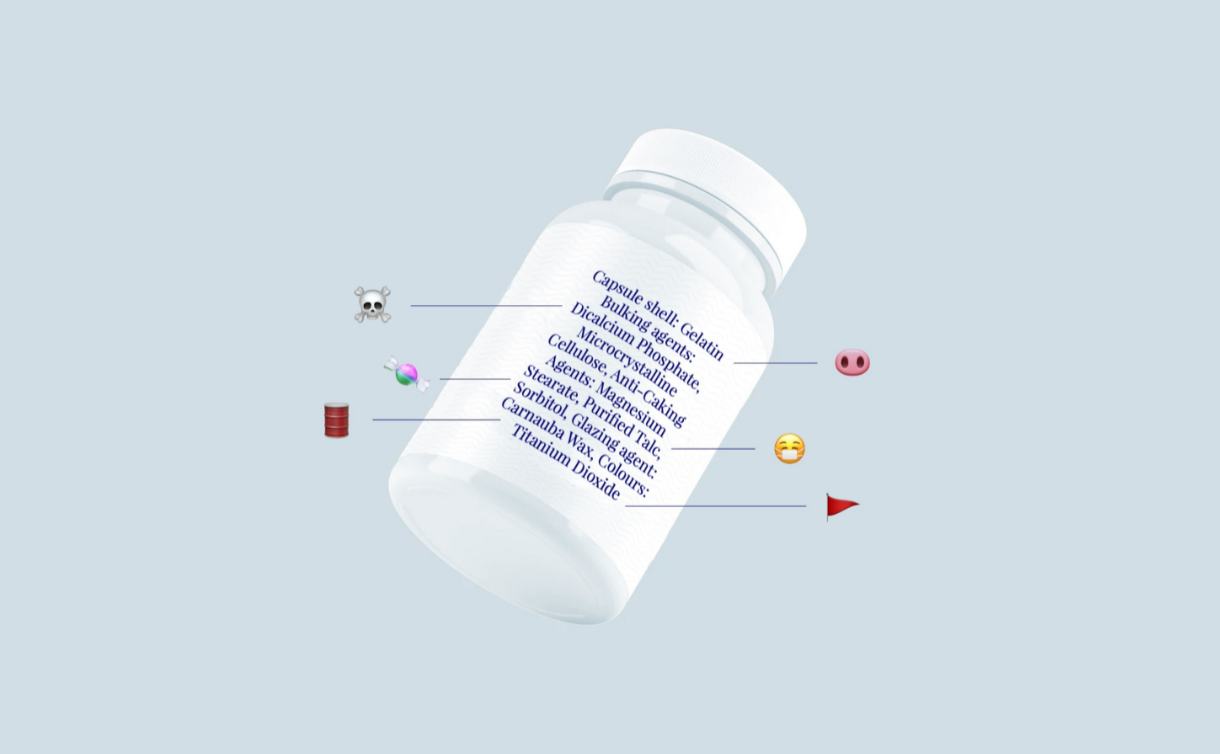The most common problems with cheap supplements
We asked for your supplement labels, and you delivered. This is what we found.


We’ve been asking people to send us pictures of their supplement labels, and giving them a breakdown of what’s actually inside those pills. There’s been a big response, and we’ve analysed the labels of hundreds of supplements from across the world.
Unsurprisingly, certain trends have emerged. And most of those aren’t great. The supplement industry has been in a race to the bottom, with cheap ingredients and a lack of regulation both to blame. Of course, there are some high-quality supplements that stand out from the crowd, but these are few and far between.
Here are 8 problems that we’ve noticed are even more common than we thought.
Vitamin D derived from sheep’s wool
There are two main forms of vitamin D—D2 and D3. Your body can absorb vitamin D3 more efficiently, and it’s more common than D2 in the supplements we’ve seen.
The problem is most vitamin D3 comes from a substance called lanolin. This is a wax that’s extracted from sheep’s wool, before being washed in various detergents and solvents. It doesn’t sound like something you want to be eating.
Omega 3 in the form of anchovy oil
The vast majority of omega 3 we came across was marked as anchovy oil. While fish oil is the best-known source of omega 3 DHA, it’s not a very good one. Researchers warn that some fish oil supplements may be high in dangerous substances, including mercury, polychlorinated biphenyls (PCBs) & organochlorine pesticides.
Anchovy oil is also not sustainable. It comes from the Peruvian anchoveta, which has been referred to as the most exploited fish in history. And to top that off, the manufacturing time means that much of it arrives on the shelves rancid.
A LOT of sugar
This one doesn’t need much explanation. At a time when many people are trying to reduce their sugar intake, it doesn’t help to have large amounts of it in supplements that are supposedly for our health. We even found one supplement whose top two ingredients were both sugar (sucrose and dextrose).
Talcum powder as a caking agent
Many white supplements and vitamins use talcum powder as a filler. Often hidden behind its scientific name, magnesium silicate, it's a caking agent and bulks up the pills.
Food-grade talc is generally recognised as safe—it’s just a bit gross. The problem is that low-quality talc can contain asbestos. The two are often found together underground, so contamination is possible during the mining process. For example, Johnson & Johnson were sued for $4.69bn in 2018 over cancers caused by contaminated talcum powder.
Too much titanium dioxide
Brilliant white pills look like they’re especially clean—marketing execs worked that out a while ago. But many of them get that colour by using titanium dioxide, a metallic pigment commonly used in oil paints. Oh, and the European Food Safety authority decided in 2021 that it could no longer be considered safe for human consumption. So why is it still in so many supplements?
Counterproductive magnesium
Magnesium is great. It’s an essential mineral that our brains and our bodies need to function. But it’s something of a loner.
In fact, the presence of magnesium can inhibit the absorption of other nutrients, so if you’re taking a magnesium supplement, it should be at a different time to anything else. Too many multivitamins ignore that fact, and stuff it into their products so that they can put an extra claim on the label. Once again, a triumph of marketing over health.
Inactive forms of vitamins
Not all forms of vitamins are equal. Some are easy for your body to absorb efficiently, and some aren’t. The better you can absorb a nutrient, the more effects you’ll feel.
Unfortunately, the less effective, inactive forms of vitamins are often cheaper to manufacture, so find their way into low-quality supplements. Examples include vitamin B12 as cyanocobalamin, and vitamin A as beta carotene.
Palm oil by by any other name
Most people know about the problematic nature of palm oil—rainforests burned down to make space for enormous plantations, with habitats of endangered animals destroyed indiscriminately.
But again, it’s cheap, so plenty of companies use it in their supplements, wherever they need some form of oil or fat. And it can even show up in the industrial soaps used to lubricate machines, traces of which remain in the finished product.
So ask more questions, and find out exactly what’s in the bottle. Raise your standards. And as a rule of thumb, if you wouldn’t eat it, don’t.